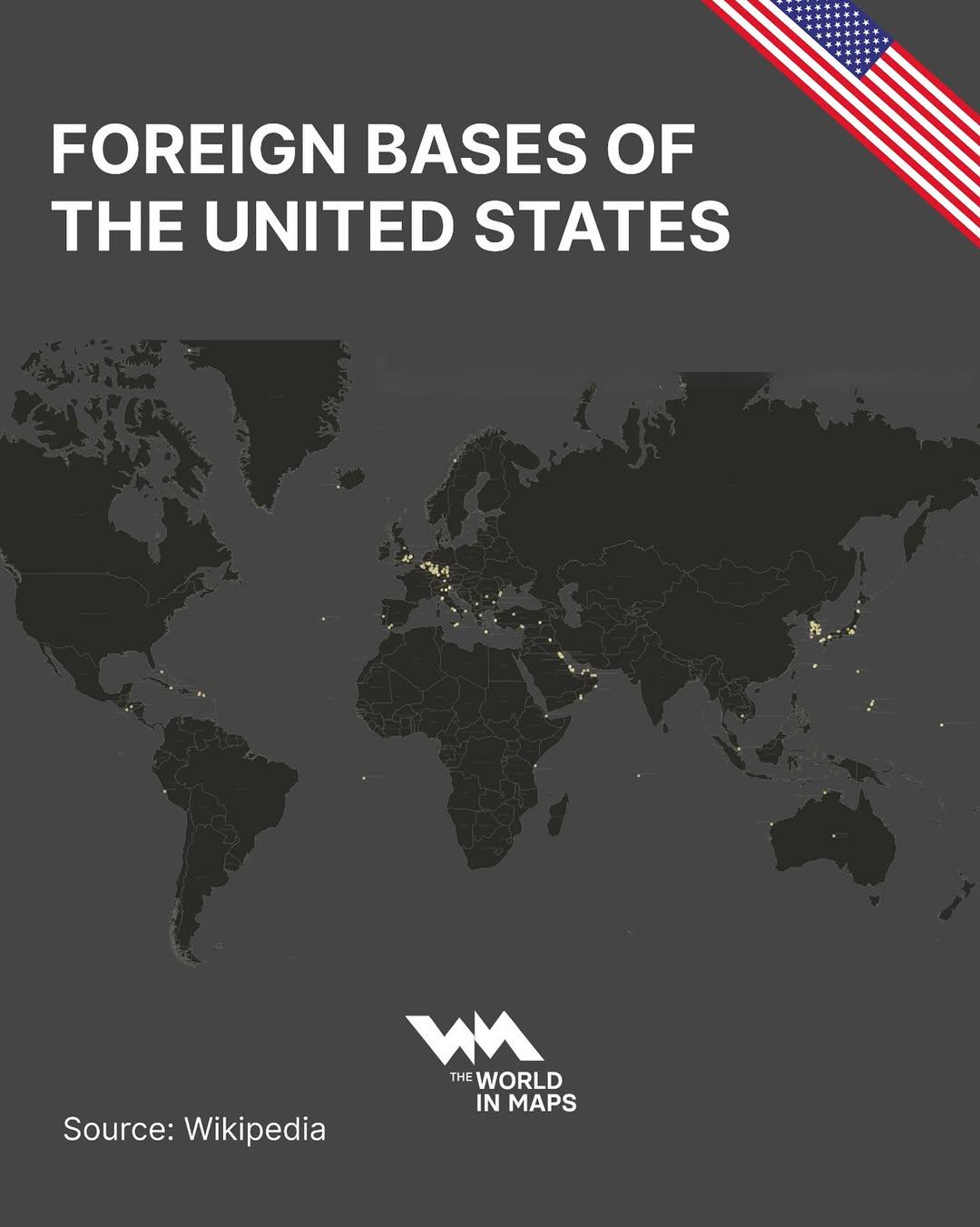Map of Foreign Bases of the United States


Marcus Rodriguez
Historical Geography Expert
Marcus Rodriguez specializes in historical cartography and geographic data analysis. With a background in both history and geography, he brings unique...
Geographic Analysis
What This Map Shows
The "Foreign Bases of the United States" map provides a detailed visual representation of the military installations and bases operated by the U.S. around the globe. This visualization highlights the strategic locations where the United States maintains a military presence, showcasing the extent of its global reach and influence. From the bustling bases in Europe to the more remote installations in the Pacific, this map serves as a powerful reminder of the U.S. commitment to international security and defense.
Deep Dive into U.S. Foreign Military Bases
The presence of U.S. military bases abroad is a significant aspect of American foreign policy and military strategy. These bases serve various purposes, including deterrence, rapid deployment capabilities, humanitarian assistance, and support for allied nations. As of 2023, the United States operates approximately 800 military bases in over 70 countries, with a focus on regions deemed critical for national security and geopolitical stability.
Interestingly, the distribution of these bases reflects historical alliances, military conflicts, and evolving global threats. For instance, in Europe, the presence of U.S. bases is largely a legacy of the Cold War, established to counter Soviet influence. Countries like Germany and Italy host some of the largest bases, such as Ramstein Air Base and Aviano Air Base, which not only support U.S. operations but also serve as hubs for NATO activities.
In the Pacific, U.S. bases play a crucial role in addressing challenges from rising powers, particularly China. The bases in Japan and South Korea, such as Yokota Air Base and Camp Humphreys, are strategically positioned to project power and provide reassurance to allies in the region. The recent emphasis on the Indo-Pacific strategy has led to increased military cooperation and joint exercises, highlighting the importance of these installations.
What’s fascinating is how military bases also facilitate international relations and partnerships. For example, the U.S. has agreements with many host nations that allow for shared resources and training. This collaboration often translates into stronger diplomatic ties, as countries work together to address common security concerns.
Moreover, the presence of U.S. bases can have economic implications for host nations. They often bring jobs, infrastructure development, and increased spending in local economies. However, this can also lead to tensions, as local populations may have concerns about sovereignty, environmental impacts, or cultural differences.
Regional Analysis
When examining the map of U.S. foreign bases, it’s essential to consider the distinct regional dynamics at play. In Europe, the concentration of bases is notable, with over 200 installations. This is particularly evident in Germany, where the U.S. maintains a significant military presence as a deterrent against potential threats from Eastern Europe.
In contrast, the Middle East is characterized by a more fluid and dynamic presence. Countries like Qatar and Bahrain host key bases, such as Al Udeid Air Base and Naval Support Activity Bahrain. These locations are pivotal for operations in Iraq, Syria, and Afghanistan, adapting to the ever-changing geopolitical landscape.
In Asia, the bases in Japan and South Korea underscore the strategic alliance with these nations. However, the Philippines has also seen a resurgence in U.S. military engagement, with recent agreements facilitating rotational deployments. This shift indicates a broader strategy of enhancing deterrence against regional threats, particularly in the South China Sea.
Interestingly, in Africa, the U.S. has established bases like Camp Lemonnier in Djibouti, focusing on counterterrorism operations and humanitarian missions. This highlights the diversified mission of U.S. forces, which now include not just combat readiness but also crisis response and disaster relief efforts.
Significance and Impact
The significance of U.S. foreign military bases cannot be overstated. They are a testament to America's global military footprint and its commitment to allies around the world. However, their presence also sparks debate about military spending, the implications of foreign interventions, and the long-term impacts on host nations.
As international relations evolve, so too will the role of these bases. Current trends point towards a greater emphasis on partnerships and alliances, adapting to new threats such as cyber warfare and terrorism. The future of U.S. military bases may involve a shift towards more flexible deployment strategies, allowing for rapid response capabilities while still maintaining a robust presence in key regions.
In conclusion, the "Foreign Bases of the United States" map reveals much more than just locations; it reflects the intricate web of global politics, defense strategies, and international relations. As we continue to navigate a complex world, understanding the role of these bases will be crucial for grasping the dynamics of power and security in the 21st century.
Visualization Details
- Published
- October 6, 2025
- Views
- 36
Comments
Loading comments...